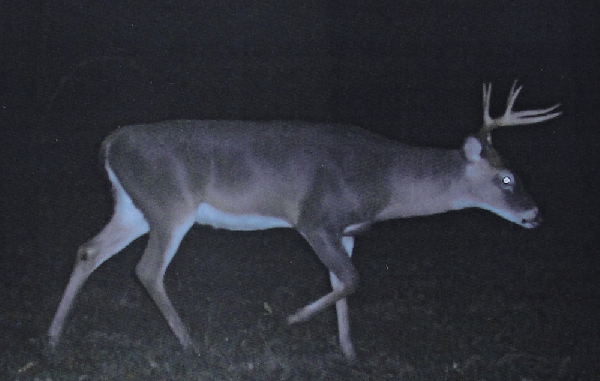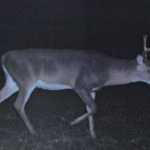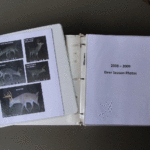
Buck photo albums preserve your work
The pursuit by a hunter of trail-camera photo information regarding whitetail buck activity can be a labor intensive project and, as a result, the end product is absolutely what you make it to be.
My personal trail-camera goals revolve primarily around monitoring and documenting buck presence and movement activity on my hunting property before, during and after each deer-hunting season.
To this end, one of my most useful techniques for current and future buck-photo analysis and comparison involves the use of annual buck photo albums. This allows me to build a dynamic seasonal buck inventory of all age classifications through the ebb and flow of the rut cycle on my property, plus I gain valuable insight into how and when the bucks in my immediate area move.
As buck photos roll in throughout the deer season, I carefully search the “working file” photos, focusing on and paying specific attention to the images. Your buck photo data can become even more useful from year to year if the data is maintained in some sort of permanent, easily accessed format.
The format that I found to work best for my purposes involves the use of annual three-ring binders for display of select buck photo data. The binder concept allows me to quickly review buck data during a season, or to go back and compare photos from one season to another.
I use two basic notebook formats, depending on what my ultimate goals are at the time, for recording and analyzing buck movement patterns on my property.
The easiest and less time consuming of the two formats involves putting together a notebook record of unique bucks photographed, including photos of any other interesting or noteworthy subjects that are obtained.
The alternative format that I use is more time consuming and labor intensive, but it yields exponentially more useful buck data. It involves a more comprehensive process of looking for and selecting the most representative photo for each and every “camera site buck event” recorded across each given deer season.
Whichever format I select, the process is kept up to date and performed as the photos roll in following each memory card swap session.
Most “camera site buck events” from trail cameras produce a single photo, but depending on the amount of time spent at a camera site by each given buck — and if I am employing the multiple photo burst mode at a particular site — multiple photos of the same buck can result.
If burst mode is being used, I select the single-most-representative photo from the burst for inclusion in the binder. I copy and paste the selected buck photos onto PowerPoint pages, usually six individual buck photos to each page. Once pasted, each photo can be cropped or sized properly on the page and then annotated with the date and time of the photo and the location. If needed, other notations can be added to a given photo or to a page of photos for future reference.
I have found PowerPoint to be an extremely convenient and powerful software platform, allowing the user to paste, crop, expand, reduce and annotate a collection of trail camera photo data. An added benefit is that a copy of each Power Point file can also be saved on your computer in PDF format for ease of emailing to friends.
My personal three-ring binder process involves making a separately named and dated multi-page PowerPoint file from each new batch of photos gained when I swap trail camera memory cards.
The new PowerPoint pages are then printed for inclusion in the binder using a quality laser jet printer and higher-end 28-pound extra-bright copy paper for better photo clarity and quality. This method is a lot less expensive than using actual photo-grade paper and yields an impressive result.
The printed PowerPoint pages are then placed in an annual binder designated for that particular deer season, front-to-back in date order, using plastic sheet protectors. This method gives me an easily accessible, durable record of bucks and buck activity on my property.
At a later date, I can pull out a binder to quickly scan and review overall buck activity or a particular buck’s pattern of activity.
As mentioned earlier, separately labeled binders are assembled as just described and kept for each deer season.
To add even more value to your binder photos, hand-written notations can subsequently be placed in the photo page margins to clarify or memorialize certain facts and observations that can be referred back to later.
Down the road, when it comes to information that you have gleaned over time from trail camera photos, don’t just trust your memory. Put your photo data in a form, such as what I have outlined above, that preserves the results of your hard work in an easily accessed format.
I am continually amazed at how often I refer back to previous pages or previous seasonal binders to review, explain or demonstrate something, or to just show photos to a friend or colleague.




